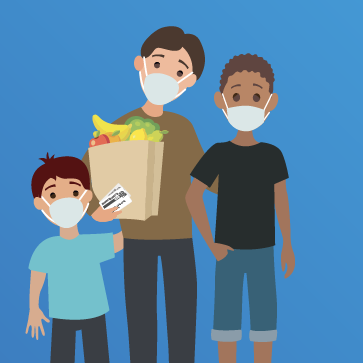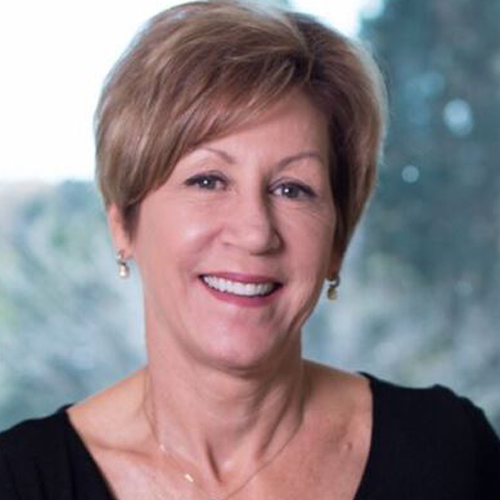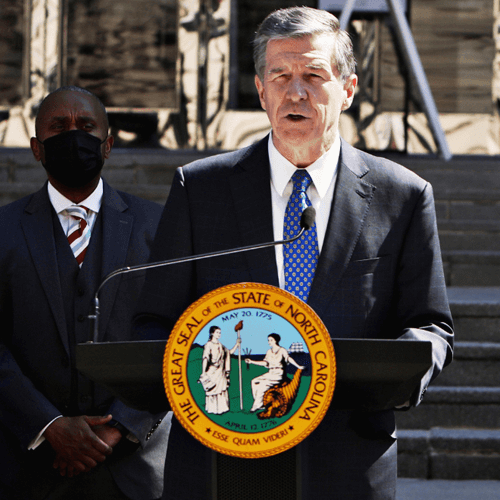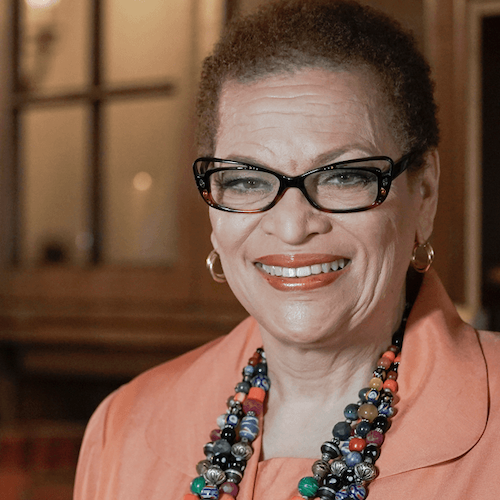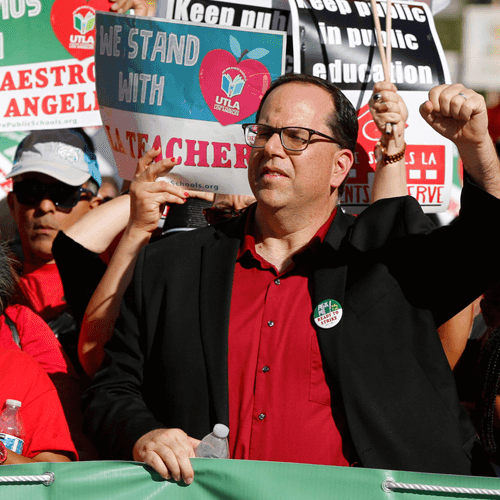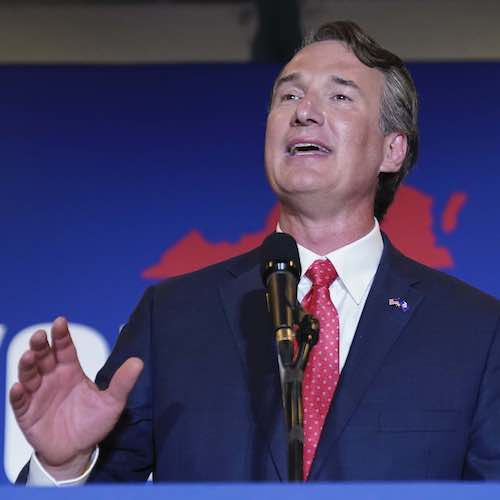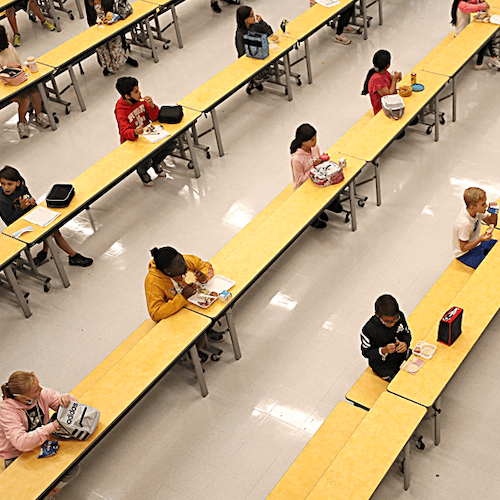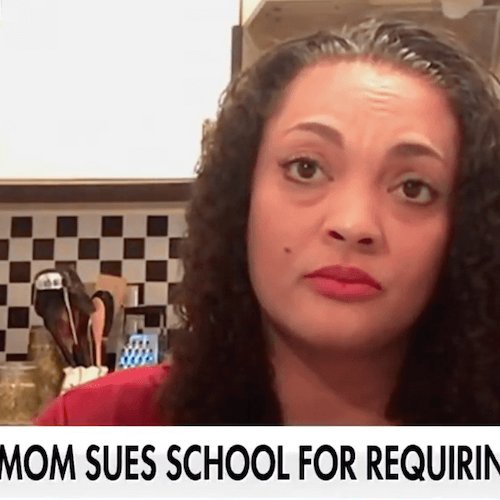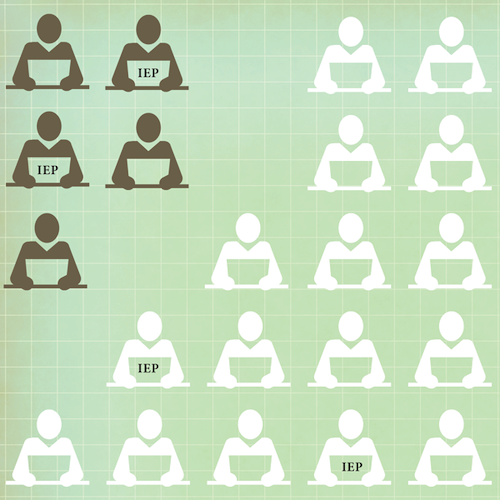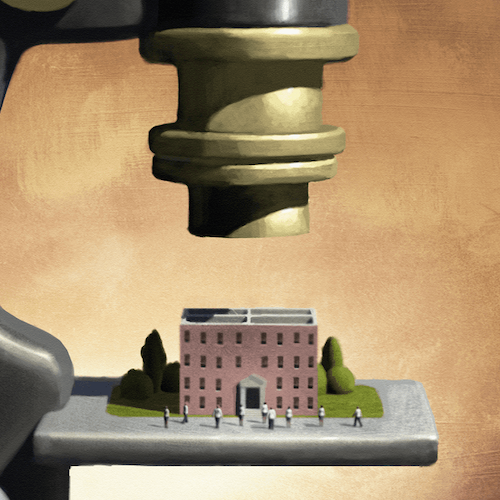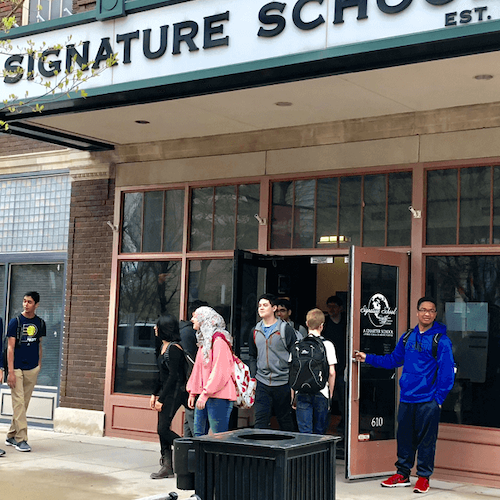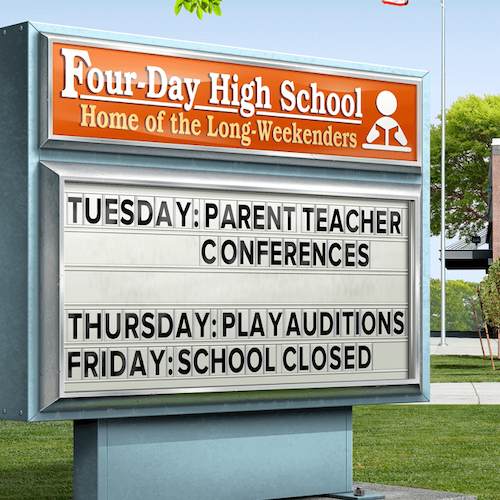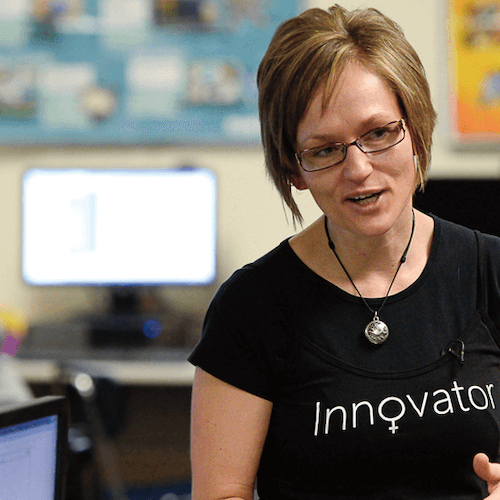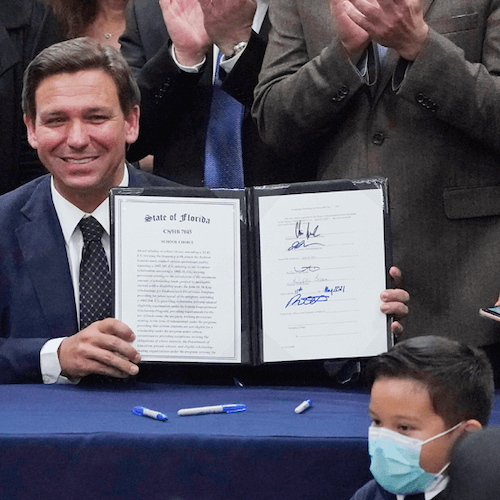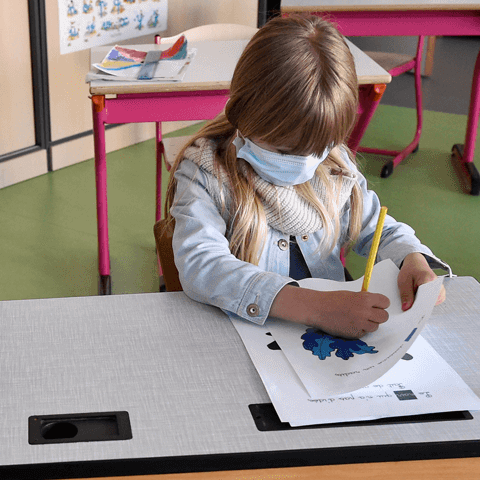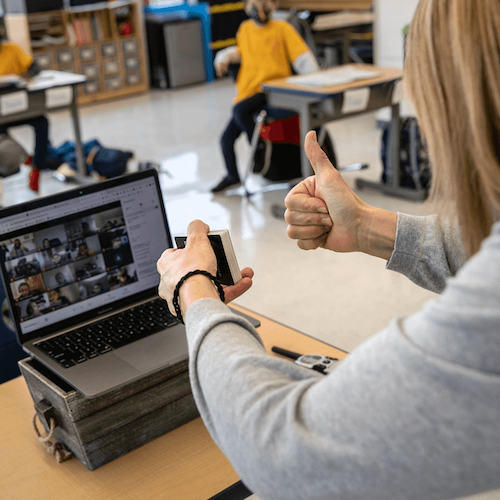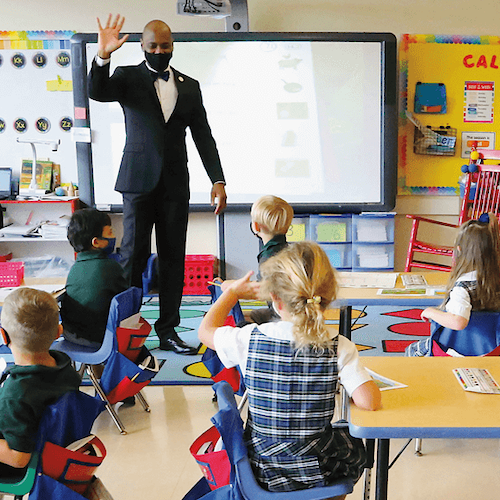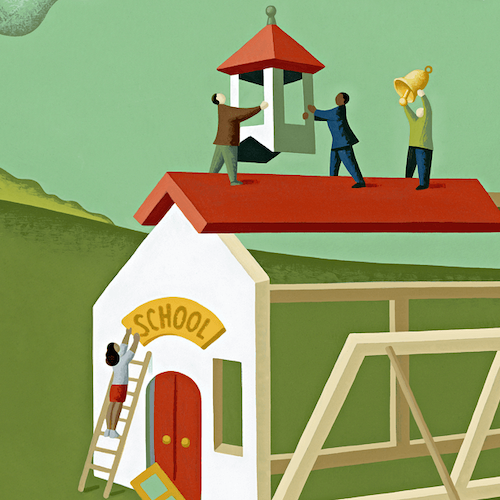
Thursday, December 30, 2021
The Weekly Podcast: Christopher Hitchens: Remembering The Writer Ten Years After His Death
This episode marks ten years since writer Christopher Hitchens died. Remembered as a slashing polemicist, Mr. Hitchens' targets ranged from Henry Kissinger to Mother Teresa to the British monarchy, and even religion. Hear some of his best moments fro […]
Read More
Tuesday, December 28, 2021
Booknotes + Podcast: Isabel Wilkerson, "The Warmth of Other Suns"
Between 1915 and 1970, six million African Americans moved from the rural South to cities in the North in search of a better life. Author Isabel Wilkerson captured the history of that mass movement, known as the Great Migration, in her Pulitzer Prize […]
Read More
Thursday, December 23, 2021
Washington Today (12-23-21): Former officer Kim Potter guilty in shooting death
Today's program looks at former police officer Kim Potter found guilty for shooting and killing Daunte Wright, Biden WH retweeting former President Trump on COVID vaccines and a new ALS research law.
Download the FREE C-SPAN Now App.
D […]
Read More
The Weekly Podcast: When The Senate Met on Christmas Eve
On December 24th, 2009, the Senate met in the early morning to debate and vote on the Affordable Care Act. Vice President Biden presided over the Senate. We look back at the day, one of the rare times Congress has met and held a vote on Christmas Eve […]
Read More
Wednesday, December 22, 2021
Washington Today (12-22-21): FDA ok's first at home anti-COVID pill
Today's program looks at the newly-approved pill to treat COVID, federal student loan payment moratorium extension, President Biden on supply chain and Sen. Schumer on Build Back Better bill. Interview with Politico's Alex Daugherty (17).
Down […]
Read More
Tuesday, December 21, 2021
Washington Today (12-21-21): POTUS outlines COVID omicron strategy
Today's program looks at President Biden's plan to confront COVID-19 omicron variant, plans for Build Back Better bill and Sec of State Blinken on Russia's demands for security guarantees. Interviews with Washington Post's Dan Diamond (5) and The Hil […]
Read More
President Biden announces Purchase of Half Billion At-Home Rapid Tests
President Biden: "The federal government will purchase one half billion...additional at home rapid tests with delivery starting in January. We'll be getting these tests to Americans for free."
Full video here:
Download the FREE C-SPAN […]
Read More
How to Empower Every Student to Talk in Class—and Why It Matters
Students and teachers returning to face-to-face (or mask-to-mask) instruction are encountering a heightened set of challenges around classroom discussion. After a year-plus of learning at home or in varying degrees of isolation, academic discourse can feel unnatural.
Students talking in class might seem unremarkable. But it’s actually a critical factor in creating productive, equitable classrooms. High school educators know that most teenagers love to talk and have no shortage of things to say. When done well, structured class discussions can deepen learning for all students; but if not facilitated equitably, they can be exclusionary for students from nondominant backgrounds or without a strong sense of belonging in class.
What makes talk a tool for learning and equity?
In a productive academic discourse, students address each other rather than communicating through the teacher. By setting up goal-directed discussions about meaningful content, educators can help students transform their ideas into public resources for their classmates, advancing the whole group’s state of understanding. A lesson thus becomes a collective endeavor in building knowledge and deepening skills.
Classroom discourse provides students with authentic opportunities to process new content using methods from oral traditions. This sets them up to become independent, self-directed learners. At the same time, discourse builds and sustains a strong community of learners by making room for student voice and agency while centering class culture around communal talk and tasks.
While many of us think of class discussions as being strictly in the humanities realm, student discourse is just as powerful a tool for learning in math and science classrooms. Research backs this up: the authors of Ambitious Science Teaching found that in science classrooms, the most “powerful examples of learning” were characterized by verbal sense-making and “productive and equitable talk.”
What does this have to do with equity? A lot, as it turns out. Culturally and linguistically diverse students are often denied the opportunities to delve into more sophisticated thinking skills like synthesis and analysis because of systemic educational inequities. As a result, a disproportionate number of these students struggle to learn independently even though they have the potential to do so.
In Culturally Responsive Teaching and the Brain, Zaretta Hammond argues that students learn the most, and develop into the strongest independent thinkers, when they engage in academic risks in an environment that feels safe. By creating welcoming, well-facilitated opportunities for in-class discourse, educators can help level the playing field and give our most vulnerable students a chance to independently flourish.
Some may think of academic discourse as happening only in the classrooms of veteran teachers, or with accelerated students who have “earned” the right to be heard. But student talk belongs in every classroom, and all students deserve opportunities to share their voices.
How to make this happen? 5 Key Steps
Even adults know that sometimes, the more challenging the topic, the more difficult the conversation. We’ve all had moments where saying nothing would be easier. So how can teachers and schools make sure that all students are set up to engage in and benefit from academic discourse? Here are a few key steps for planning and execution:
- Develop clear discourse norms and expectations, and revisit them throughout the discussion. Should students take turns talking? What’s a supportive way to respond to each other’s thoughts, and what responses might shut down talk?
- Establish goals and a timeframe up front for the discussion; this is especially crucial for engaging diverse learners and English language learners.What are the guardrails of this conversation? How and when can I participate? What’s the goal of this time?
- Choose a task that asks students to actually dosomething with ideas (also known as a reasoning or high cognitive-demand task). Is this a juicy topic that’s worth talking about?
- Plan 2-3 “discourse moves” to engage all students in the discourse; encourage students to talk to each other rather than the teacher. These moves might include things like wait time, a quiet pause while students synthesize their thoughts and prepare to speak; batch call, where a teacher calls on two or three students to talk one after the other, without the teacher speaking in between them; and universal prompts, which are prompts that can be used to push student thinking in a variety of contexts (“What makes you think that?” “What is evidence to prove…?”). Do all students have an access point into the conversation? How can I draw out students who haven’t participated yet?
- To wrap up the discussion, script a prompt for students to articulate the key point(s) in their own words. To optimize independent learning, how can students “own” the major takeaway(s) of the discussion?
Encouraging students to talk to each other in class is a key tool, not only for learning, but for equity. As students, teachers, and school leaders emerge from behind our computer screens, we have a great opportunity to create rich, engaging classroom discourse that maximizes learning for all students.
Emma Lind-Martinez is High School Math and Science Achievement Director at the KIPP Foundation.
The post How to Empower Every Student to Talk in Class—and Why It Matters appeared first on Education Next.
[NDN/ccn/comedia Links]
News.... browse around here
Booknotes+ Podcast: Jay Cost, "James Madison"
In 1787, between May and September, James Madison gave 167 speeches, made 72 motions, and served on four committees at the Constitutional Convention in Philadelphia. Jay Cost writes that "most importantly, Madison authored the Virginia Plan, a bold c […]
Read More
Monday, December 20, 2021
Washington Today (12-20-21): Sen. Manchin pushes back against WH BBB criticism
Today's program looks at Sen. Manchin's opposition to the Build Back Better social spending bill, COVID-19 omicron variant update and new Pentagon anti-extremism policies. Interview with TIME's Madeleine Carlisle on Presidential Commission on the Sup […]
Read More
The Education Exchange: Quality Incentives Partially Based on Student Rankings Press Teacher Pay in Dallas into Six Figures
 The Superintendent of the Dallas Independent School District, Michael Hinojosa, joins Paul E. Peterson to discuss how Dallas handles school safety, the recent lifting of the mask mandate in schools, and how the district has rewarded their best-performing teachers while limiting turnover.
The Superintendent of the Dallas Independent School District, Michael Hinojosa, joins Paul E. Peterson to discuss how Dallas handles school safety, the recent lifting of the mask mandate in schools, and how the district has rewarded their best-performing teachers while limiting turnover.
Follow The Education Exchange on Soundcloud, Apple Podcasts, Google Podcasts, Stitcher or here on Education Next.
— Education Next
The post The Education Exchange: Merit Bonuses Partly Based on Student Ratings Push Teacher Pay in Dallas into Six Figures appeared first on Education Next.
By: Education Next
Title: The Education Exchange: Merit Bonuses Partly Based on Student Ratings Push Teacher Pay in Dallas into Six Figures
Sourced From: www.educationnext.org/education-exchange-merit-bonuses-partly-based-on-student-ratings-push-teacher-pay-in-dallas-into-six-figures/
Published Date: Mon, 20 Dec 2021 10:00:36 +0000
News.... browse around here
Friday, December 17, 2021
Washington Today (12-17-21): POTUS on voting rights reform: "This battle is not over"
Today's program looks at President Biden and Senate Democrats' push on voting rights bills, COVID-19 omicron variant update, NIH Director Dr. Francis Collins' retirement and Roger Stone pleads the Fifth before the House Jan 6th attack investigative c […]
Read More
Washington Today (12-16-21): Senate likely to push Build Back Better bill to January
Today's program looks at stalled Senate negotiations over the $1.75T Build Back Better bill, Senate impasse over State Dept nominees, NHTSA Administrator confirmation hearing. Interview with Roll Call's Jennifer Shutt (5).
Download the FREE C- […]
Read More
Thursday, December 16, 2021
President Biden Awards Medal of Honor to Three Army Soldiers
President Biden on Thursday awarded the Medal of Honor, the nation's highest military decoration, to three U.S. Army soldiers for their "acts of gallantry and intrepidity above and beyond the call of duty" while serving in Iraq and Afghanistan.
Read More
My Friend Denis Doyle
Several people I admire have recently passed away (Bob Dole, Colin Powell, Fred Hiatt, Stephen Sondheim…), but the only one in that group who was also a close friend is Denis Doyle, who died at eighty-one on December 2 in Los Angeles, his home in recent years.

Denis and his late wife Gloria returned to their native state late in life to be near their children and grandchildren and because the indomitable Gloria needed more medical attention and personal help. It was the right move, and they were spectacularly well looked after as Gloria grew weaker and Denis acquired health challenges of his own.
I had the opportunity to visit a couple of times, including shortly before the Covid-19 plague shut everyone down. Denis was physically diminished but sharp, affable and curious as ever. Our real relationship, though, was in Washington, where for decades Denis and Gloria and Renu and I lived a couple of miles apart. It was both a professional and social connection. Our kids attended the same school. We dined together a hundred times. We had many mutual friends. Renu was occasionally able to offer medical suggestions, and I lapped up the recipes in Gloria’s self-published cookbooks.
Gloria Revilla Doyle, it must be noted, was one of the most remarkable people I have known. Despite a degenerative situation that left her a quadriplegic for decades, she was so much more than plucky and determined. She was regal and commanding, inquisitive, generous, and kindly, pursuing a wide range of interests with a wide range of friends—and expertly hosting many of us—with nary a “woe is me,” at least none that we ever heard.
And Denis was always there, even while maintaining his own busy and productive professional life, unfailingly supportive, patient, loving, and accommodating, both in suburban D.C. and later in the City of Angels.
Denis’s professional life was, of course, spent in the education realm, where we first intersected and bonded, not just because we agreed on so much, but also because we stimulated each other and on multiple occasions were able to collaborate, including co-authored pieces that sometimes gored ungrateful oxen.
Denis started his career as a staffer to the California legislature, then came to Washington to work at the Office of Economic Opportunity and National Institute of Education (antecedent to IES), where he played a large role in early school-voucher experiments. Post-government, Denis was connected to several eminent think tanks and was a prolific author, pundit, and scholar under their auspices and as an independent consultant. He remained passionate about school choice, particularly as a necessary strategy to help needy kids otherwise stuck in dire schools. He hated the hypocrisy of those who opposed choice for others while availing themselves of it for their own kids. But he was no “silver bullet” reformer. He had plenty of ammunition—and plenty of targets. He served on the National Commission on Time and Learning. While at AEI, he (and Terry Hartle) wrote incisively about the strengths and weaknesses of state education agencies. He penned a trenchant comparison of the U.S. and Japanese education systems. Possibly his most influential work, coauthored with the late David Kearns, was Winning the Brain Race: A Bold Plan to Make Our Schools Competitive. [Doyle’s article “The Knowledge Guild: The tension between unions and professionals” appeared in the Winter 2004 issue of Education Next.]
Later in his career, Denis and a couple of colleagues launched a successful educational technology firm called SchoolNet.
As Andy Rotherham wrote of Denis, “A few things stand out. First, his mind. You run into smart people in this sector all the time, and then you run into *smart* people in this sector. He was the latter. A real intellect, polymath, and curious person. Second, he was funny. He was kind, but he was hilarious.”
His influence was felt far and wide, not just through his scholarship and commentary, but also through his impact on others. As Andy noted, “[U]pon his passing, it was noteworthy the number of people who said things like, ‘a real mentor to me.’” And as Leslye Arsht and Sue Pimentel wrote, “Denis brought a unique mix of expertise and common sense, confidence and curiosity, and understanding and good humor to charged and complex arenas. He was one of a kind and will be missed.”
Denis was fun, too. A teller of stories, a connoisseur of fine food and drink, a gracious and open-handed host, a genial companion, and the owner of a grand sense of humor. It would have been hard not to be his friend.
I’m privileged to have known and worked with him. But more than that, I loved the guy.
Chester E. Finn, Jr., is a Distinguished Senior Fellow and President Emeritus at the Thomas B. Fordham Institute. He is also a Senior Fellow at Stanford’s Hoover Institution.
This post originally appeared on the Fordham Institute’s Flypaper blog.
The post My Friend Denis Doyle appeared first on Education Next.
By: Chester E. Finn, Jr.
Title: My Friend Denis Doyle
Sourced From: www.educationnext.org/my-friend-denis-doyle/
Published Date: Thu, 16 Dec 2021 16:10:22 +0000
News.... browse around here
Biden’s ‘Build Back Better’ Bill Could Decimate the Child-Care Landscape

Senate Democrats are planning a vote on a version of President Joe Biden’s $1.75 trillion “Build Back Better” bill sometime in the coming weeks or months. The Democratic House has already passed its version of the bill, which includes over $270 billion for a massive new federal child-care program (there are additional funds for Pre-K, but I’ll set those aside for now). Yet there’s no assurance this plan will ultimately pass: Last week, West Virginia’s Joe Manchin (the crucial 50th vote for Democrats) made it clear that he has very mixed feelings about the bill, while NPR reported that just 41 percent of voters support the Build Back Better agenda.
Even as things remain very much up in the air, educators and advocates may be inclined to embrace this landmark expansion in child-care funding—but they’d do well to first peruse the fine print. As currently written, the program could have devastating consequences for the current child-care landscape.
For starters, the new program would likely change which child-care centers are eligible for federal support. While faith-based child-care providers are currently eligible to receive government funding, the House version of Build Back Better includes rules that would cut faith-based providers out of the picture. And that’s a big deal, given that, of the families who use center-based child care, 53 percent use one affiliated with a faith-based provider.
Uncle Sam has long funded child care through the $10 billion Child Care Development Block Grant. The CCDBG enjoys broad bipartisan support because it provides parents with child-care certificates, supporting individual families rather than particular child-care systems. This allows it to sidestep partisan debates about which kinds of child care parents should prefer. As my colleague Max Eden recently noted in Newsweek, “These certificates don’t count as formal federal grants, which would subject child care centers to a slew of regulations. They effectively put cash in parents’ pockets, providing the financial basis for a robust and diverse array of trusted child care providers.”
In Build Back Better, though, the hundreds of billions in new child-care funding are officially defined as federal aid. This means that even tiny neighborhood providers and those that operate in accord with a faith tradition would be subjected to a raft of new rules and complex reporting requirements—including costly renovations required to comply with the Americans with Disabilities Act, which many of these providers would be unable to afford. For those who say “good riddance” to potentially tens of thousands of small community providers because they can’t afford the requisite renovations, understand that the result would be a rapid concentration of child care in a few larger, more impersonal, and less localized centers. If that appeals, so be it. But many find such a shift disconcerting.
Moreover, while nonsectarian providers could use Build Back Better’s funds for required facilities renovations, religiously affiliated centers would likely not be able to. That’s because the House proposal takes a direct swipe at child-care facilities housed in churches, synagogues, and mosques—potentially in violation of Supreme Court doctrine as spelled out in Trinity Lutheran v. Comer. The House language stipulates that funds reserved for facilities grants (for remodeling, renovation, or repair) may not be used for “buildings or facilities that are primarily used for sectarian instruction or religious worship.”
Existing federal programs illustrate some of the spending and staffing requirements that religious child-care providers may soon face. For example, if Head Start is any indicator, religious providers may be prohibited from asking that their employees all share their faith, while Department of Health and Human Services regulations prohibit recipients of federal funds from engaging in religious activities.
In short, given that secular child-care providers would be eligible for federal aid while church-based providers would be forced out due to a slew of program requirements, the bill threatens to decimate the more trusted, local, and faith-based parts of the child-care ecosystem. What we risk winding up with, especially for families who can’t afford costly options, is a dramatically increased reliance on less personal, less local child-care options—largely because such operators (public or private) would have the resources to jump through the requisite hoops.
There is certainly some debate about how all the relevant rules and regulations would be enforced in practice. But given the ambiguity in the current bill language, and the degree to which so many families currently rely upon imperiled faith-based providers, those who aim to help families struggling with child-care challenges should use the Senate bill to ensure that new federal spending doesn’t unintentionally aggravate the problem it’s intended to ameliorate.
Frederick Hess is director of education policy studies at the American Enterprise Institute and an executive editor of Education Next.
This post originally appeared on Rick Hess Straight Up.
The post Biden’s ‘Build Back Better’ Bill Could Decimate the Child-Care Landscape appeared first on Education Next.
By: Frederick Hess
Title: Biden’s ‘Build Back Better’ Bill Could Decimate the Child-Care Landscape
Sourced From: www.educationnext.org/bidens-build-back-better-bill-could-decimate-child-care-landscape-faith-based-providers/
Published Date: Thu, 16 Dec 2021 10:00:00 +0000
News.... browse around here
The Weekly Podcast: Bob Dole, Master Comedian of the Senate
Many tributes to the late Senator noted his fondness for quips, jokes, and humor throughout his public life. We look back specifically at jokes he made in connection with his time in the U.S. Senate -- and play some of his funniest lines.
Read More
Wednesday, December 15, 2021
Washington Today (12-15-21): President Biden sees tornado devastation in Kentucky
Today's program looks at President Biden surveying tornado damage in Kentucky, Senate passing NDAA and Fed Chair Powell on future interest rate hikes. Interview with CNBC's Leslie Josephs on airline COVID aid & current flight disruptions (21).
Read More
The Top 10 Education Next Blog Site Posts of 2021

For a second year in a row, articles about how schools responded to the Covid-19 pandemic dominated our list of the Top Ten Education Next Blog Posts of the year.
Three of the top ten blog posts in 2021 dealt directly with the pandemic-related absences of students and teachers from in-person school. The most-read post, “The Government Is Paying Public School Parents Billions of Dollars to Keep Their Children Home,” by Ira Stoll, focused on the Pandemic Electronic Benefits Transfer, or P-EBT, program.
“Under the program, parents whose children are home from school because of the pandemic receive money to compensate for the free or subsidized school breakfast, lunch, and snack that their children otherwise would have received,” the blog post reported. “The American Rescue Plan Act that President Biden signed into law on March 11, 2021, increased and extended the P-EBT benefits—with a price tag estimated by the Congressional Budget Office at $5,560,000,000—just as Biden was also urging schools to reopen for in-person instruction. Parents who send their children back to school would lose the electronic benefits.”
Other pandemic-related blog posts that made the Top Ten list included Derrell Bradford’s “A Rolling National Teacher Strike Is Why Schools Are Closed” and Robert Pondiscio’s “Is Hybrid Learning Killing Teaching?”
A fourth post, Frederick Hess’s “What Youngkin’s Virginia Win Means for Education,” also noted the effect on an election outcome of parental frustration over prolonged school closures. Three other Hess blog posts—“What It Takes to Actually Improve Math Education,” “The Problems With Biden’s Universal Pre-K Proposal” and “When Does Educational Equity Become Educationally Unethical?” also made the Top Ten.
Here’s hoping for a healthy 2022 in which pandemic-related news is less prominent.
The full Top Ten list is here:
1. The Government Is Paying Public School Parents Billions of Dollars to Keep Their Children Home
Family would lose $409 a month in Pandemic-EBT benefits by moving 3 children to in-person from remote
By Ira Stoll
2. What It Takes to Actually Improve Math Education
Repetitive practice lies at the heart of mastery of almost every discipline, and mathematics is no exception
By Frederick Hess
3. The Problems With Biden’s Universal Pre-K Proposal
“The proposed new investments in universal pre-K are not in step with the realities of the existing mixed-delivery system”
By Frederick Hess
4. Can Teaching Be Improved by Law?
At least twenty states have passed or are considering measures related to the science of reading
By Robert Pondiscio
5. New Cal State LA Ethnic Studies Dean Backed Farrakhan, Wished Clarence Thomas Dead
“Her history of advocacy will serve her well,” college president says in press release praising newly elevated economist
By Ira Stoll
6. A Rolling National Teacher Strike Is Why Schools Are Closed
Context isn’t just coronavirus, but years of union activism and potential for tens of billions in federal funds from Biden
By Derrell Bradford
7. Is Hybrid Learning Killing Teaching?
Bolstering the urgency of getting everyone back in person.
By Robert Pondiscio
8. What Youngkin’s Virginia Win Means for Education
It was all about values, frustration, and parental empowerment. And that is potent, deeply personal stuff.
By Frederick Hess
9. When Does Educational Equity Become Educationally Unethical?
“The push for equity stumbles into a truly gruesome place when educators are being trained or directed to shortchange some students based on how they look or where they live.”
By Frederick Hess
10. An Encouraging Consensus on Character Education
Some recommendations for developing compassion, courage, determination, fairness, grit, honesty, patience, respect, responsibility, self-motivation, and temperance.
By Andy Smarick
The post The Top 10 Education Next Blog Posts of 2021 appeared first on Education Next.
[NDN/ccn/comedia Links]
News.... browse around here
The Golden State Transfer To Change Mathematics With "Data Scientific research," in the name of Equity and also Inclusion

For many years, Professor Jo Boaler has provided extraordinary takes on math education from her bunker at Stanford University in California. For example, there was the time Boaler claimed that a mistake makes your brain “grow” even if you are unaware that you have made one. Then, there was the time that Boaler claimed that it was terrible to ask students to memorize times-tables, suggesting she had never memorized times-tables herself and that this had not held her back as a professor of math education (a revealing admission). And we must not forget all those times Boaler has claimed that timed tests cause math anxiety and yet, when you follow the citation trail, the evidence to support this claim appears to be lacking. [Boaler’s book Limitless Mind was reviewed by Daniel Ansari in the Spring 2020 issue of Education Next under the headline “The Case for Limitlessness Has Its Limits.”]
Nevertheless, the good citizens of California decided to ask Boaler to help redesign their math curriculum.
First, a little context.
Boaler is probably best known for her “Railside” study. This study involves a long-term comparison of three schools, one of which, Railside, taught math in a “reform-oriented” way that avoided a focus on “executing procedures” and instead set-up problems that students could solve in a number of different ways. This sounds like a variant of problem-based learning. Although the wider evidence suggests problem-based learning is ineffective, Boaler found that, “Compared with the other two schools in the study, Railside students learned more, enjoyed mathematics more and progressed to higher mathematics levels.”
This is where the tale takes a dark turn. In 2012, Wayne Bishop, Paul Clopton and James Milgram, three Californian math professors, released a preprint paper (i.e. it was not peer-reviewed or published in a journal). Boaler never identified the schools in the “Railside” study, preferring pseudonyms, but Bishop et al. claimed to be able to identify them from the data presented in her paper. On this basis, they argued that Boaler’s conclusions were unsound. Boaler then published an article about “attacks by Milgram and Bishop,” alleging their behavior constituted bullying.
Whoever is right about the facts of this case, it does not take the kind of investigation conducted by Bishop et al. to note a fundamental flaw with the Railside study. Even if it really does show that students at Railside did better than at the other two schools, it is still a study of just three schools. As clearly described in the abstract, the schools are not even similar to each other. Unless you believe that every single reform-oriented school is worse than every single non-reformed-oriented school, the results prove nothing. I am pretty sure that if I was given the whole of California to choose from, I could replicate these results in reverse.
I am not claiming that Boaler chose the schools in order to obtain a particular set of results, I am claiming that the results she obtained could have arisen purely by chance and therefore prove nothing. This is why in randomized controlled trials, rather than having one or two items in each condition, there are usually tens or even hundreds.
And this is not the first research of its kind. Boaler conducted a similar study in London before she moved to the U.S. This time, only two schools were involved, “Amber Hill” and “Phoenix Park.” Again, Boaler claimed that the reform-oriented school was somehow better than the other one and again, this proves nothing.
Nevertheless, Boaler is a math-education rock star. Her Youcubed maths teaching website has a hit counter that reads over 54 million at the time of writing. Youcubed hosts many of Boaler’s papers, repeats her claim that “mistakes grow your brain” and her claim about the link between timed-tests and math anxiety, while also loudly trumpeting the concept of “Data Science.”
Boaler was a supervisor of Dan Meyer when Meyer was completing a PhD at Stanford University. Meyer is probably best known for his 2010 TED Talk in which he argues that the math problems we give to students need to be more open and less structured, giving fewer clues as to how to solve them and including extraneous information. For many years, the motto on his blog site was “less helpful.” This approach is at odds with what we have learned from cognitive science and is likely to overload students who are learning a particular set of math concepts for the first time. Nevertheless, in 2015, The New Republic declared that Meyer was, “The Man Who Will Save Math.”
The media cannot get enough of this stuff.
So, where does “Data Science” fit in? It seems that Boaler favors a problem-solving approach in math lessons where the teacher acts as a hands-off facilitator. I am sure this is for the right reasons and she genuinely believes it is more effective. And yet if you throw a quadratic functions problem, or even one requiring the manipulation of linear algebra, in front of students who don’t know the relevant math, they won’t know where to start. Even if you set it up so that the problem makes sense, the chances of them inventing the right algebra to solve it are slim. Those students who are already at a disadvantage will fail to learn.
Rather than question the premise that a problem-solving approach is best, an alternative is to change the maths you want students to learn so that problems can be tackled by students with little knowledge and with minimal teacher instruction. Teachers who take a problem-based approach often stress that they are developing problem solving skills rather than well-defined procedural or conceptual knowledge. This accounts for the profusion of activities we often see listed in curriculum documents, such as the recent draft Australian math curriculum, where the elaborations include statements like, “using digital tools to create tessellations of shapes, including paver and tiling patterns.” Why would you do this? What is the purpose? The purpose is activity and the hypothesis is that engaging in math-type activity = learning mathematics.
Similarly, if you throw a bunch of data at students, they can group it, type it into a spreadsheet, plot graphs, and so on. It’s pretty easy to convince yourself they are doing something called “Data Science.” They don’t have to do anything particularly useful with the data because there are no right answers (and mistakes grow your brain anyway). This may explain why Boaler has pursued the objective of remaking the Californian High School Curriculum around “Data Science.”
To understand what that looks like, you first need to understand how U.S. states structure their high school math courses.
Unlike Europe, Australia and many other jurisdictions, the U.S. high school math curriculum (Grades 9-12) has evolved to constitute a set of discrete courses that address different aspects of math. The courses are:
- Algebra I
- Geometry
- Algebra II
- Precalculus
- Calculus
The immediate problem this represents is that each of these five courses assumes knowledge of the previous courses in the sequence and lasts for a year. However, high school in the U.S. only lasts four years. If a student wants to complete Calculus before college, an effective prerequisite for many prestigious undergraduate science and math courses, the student and the school somehow need to speed the process up.
Traditionally, the way this is done is by allowing students to take Algebra I in the eighth or even seventh grade, something encouraged by a U.S. Department of Education push that seeks to expand access to Algebra I in the eighth grade. Not only does the draft Californian Mathematics Framework, co-authored by Jo Boaler, seek to discourage schools from offering Algebra I in Grades 7 and 8, it arguably seeks to supplant the traditional sequence of courses with “Data Science” units.
To those outside the U.S., the commitment to the traditional sequence can seem parochial. The contents of “Algebra I” are spread across multiple year levels in my Australian school, starting in about Year 7 and ending at around Year 10, although there is not a complete correspondence. However, it seems that any call to change the traditional sequence is generally used by reformers in the U.S. as a Trojan horse for changing teaching methods.
OK, so I have made some pretty big claims. However, if you want to know the evidence behind them, this document by Boaz Barak and Edith Cohen deals with these points in detail. Perhaps the most contentious is the idea that the new framework seeks to disrupt and supplant the old sequence of high school mathematics courses. In theory, the curriculum is intended to be neutral about this. However, video evidence that Barak and Cohen draw upon shows Boaler explaining that the authors have not updated the traditional sequence to make it as “vibrant and interesting” as the new Data Science pathway, “because it would give the message that both of these are equally important for kids.” Boaler also suggests that Data Science units allow for more “inclusive” and “equitable” teaching practices than the alternatives. This does not strike me as neutral.
Moreover, I am not convinced that the kind of teaching practices promoted by Boaler are inclusive and equitable. In the moment, they may allow students with little mathematical knowledge to interact with a problem alongside students with more mathematical knowledge. However, inclusion and equity should be about ensuring that class, race, gender and other personal characteristics are no bar to developing high-level mathematics skills. If you provide students in regular public schools a watered-down diet that does not give them fluency with algebra and an introduction to calculus, you do them no favors. These students will be competing for entry to college against students who could afford private tutors or private schools that can make up for these deficiencies.
An open letter signed by hundreds of mathematicians, researchers, software engineers and others with an interest in the mathematics curriculum makes this point clearly:
“Such a reform would disadvantage K-12 public school students in the United States compared with their international and private-school peers. It may lead to a de facto privatization of advanced mathematics K-12 education and disproportionately harm students with fewer resources.”
There is an obvious answer to this argument that reformers such as Boaler could reach for—colleges need to reduce their mathematics entry requirements. Yet, this just kicks the can down the road. At some point, advanced societies really do need mathematicians, scientists and engineers who are fluent in advanced mathematics. Those societies will either have to teach students algebra and calculus, regardless of whether such content lends itself to supposedly equitable and inclusive teaching methods, or they will need to import graduates from overseas who can do the math for them. If we can agree that at least some mathematical talent must be home-grown, why not grasp this nettle earlier, in Grades 7 and 8?
I am sure reformers such as Jo Boaler want the best for students. I am sure they are convinced that if we followed their advice, the world would be a more equitable place and a wider range of people, including those who currently think they are bad at the subject, would be engaged in mathematics for work or pleasure. This perhaps explains their missionary zeal.
But I just wonder whether they have thought it all through. Properly. The road to a mathematically impoverished future may be tessellated with good intentions.
Greg Ashman teaches physics and mathematics at an independent school in Ballarat, Australia and is the author of The Power of Explicit Teaching and Direct Instruction. He blogs at Filling the Pail, from which this post is adapted.
The post California Moves to Replace Math With “Data Science,” in the name of Equity and Inclusion appeared first on Education Next.
By: Greg Ashman
Title: California Moves to Replace Math With “Data Science,” in the name of Equity and Inclusion
Sourced From: www.educationnext.org/california-moves-to-replace-math-with-data-science-in-the-name-of-equity-and-inclusion/
Published Date: Wed, 15 Dec 2021 09:59:18 +0000
News.... browse around here
Washington Today Podcast (12/14/2021): Senate Votes 50-49 to Raise Debt Limit by $2.5 Trillion
The latest on the Senate's passage of raising the debt limit and the House's debate on holding Former COS Mark Meadows in contempt of Congress. Interviews with Alex Bolton of The Hill (5) and Josh Gerstein of Politico (30).
Download the F […]
Read More
Tuesday, December 14, 2021
Washington Today (12-13-21): President Biden briefed on tornado damage, pledges aid
Today's program looks at federal and state tornado damage response. $1.75T Build Back Better bill negotiations, COVID-19 omicron concerns. Interview with TIME's Jeffrey Kluger on Person of the Year Elon Musk (39).
Download the FREE C-SPAN Now […]
Read More
Rep. Liz Cheney Reads January 6th Texts from Fox News Hosts to Mark Meadows
Full Rep. Liz Cheney statement on holding Mark Meadows in contempt, including texts from Sean Hannity, Laura Ingraham, Brian Kilmeade and others:
"These text messages leave no doubt...multiple Fox News hosts knew the president needed to act i […]
Read More
Education's Enduring Romance with "High-end Beliefs"

The proof of a powerful idea is how well it sticks. Once you hear about it “you start to see it everywhere,” as Bari Weiss puts it. She was describing “luxury beliefs,” a phrase coined by Rob Henderson, an Air Force veteran and Ph.D. candidate at the University of Cambridge, who defines luxury beliefs as “ideas and opinions that confer status on the rich at very little cost, while taking a toll on the lower class.” You can afford to believe in defunding the police, for example, if you live in a safe neighborhood that’s unlikely to be negatively affected by diminished police presence. It’s someone else who will suffer the consequence of your fashionable idealism.
Henderson described luxury beliefs on a recent episode of Weiss’s excellent podcast, and she’s right: They’re everywhere. And nowhere is the gulf between upscale ideals and everyday reality wider or more obvious than in education policy and practice. Too few of us know or have personal experience walking in the shoes of the families and students we claim to serve. Instead, we opine about what’s best for other people’s children from the safety of our respective bubbles, indulging our own set of luxury beliefs.
Where to begin? It’s easy to be blithe about school safety and policing when your child goes to a safe, well-run school. Similarly, one can be quick to label disruptive behavior as “a form of communication” and focus entirely on “disparate impact” in student suspension rates when your child’s school is orderly and she faces minimal risk of physical threats or having her education frittered away by endless disruptions. Hand-wringing about overstressed teens groaning under the weight of hours of homework and the pressure of taking too many AP classes to impress college admissions officers flies in the face of data suggesting just the opposite: The average American student is challenged not too much, but too little.
A grating luxury belief of recent vintage is the haughty insistence that “learning loss isn’t real,” and that Covid-induced school shutdowns haven’t had a profoundly negative effect on children—particularly disadvantaged children.
A particularly selfish belief is common to “proud public-school supporters” who oppose school choice measures that would benefit low-income families while failing to recognize that they themselves utilize the most common form of choice: the ability to buy a home in a community with good schools. Corey DeAngelis of American Federation for Children has made a cottage industry of unmasking or calling out elected officials and advocates, from Elizabeth Warren and Terry McAuliffe to Diane Ravitch, who play a particularly obnoxious form of this game touting the virtues of public education while sending their own children to private schools.
Classroom practice is similarly riddled with luxury beliefs. For years, I’ve noted my own “complicated relationship” with testing, which lends political will and moral authority to reform efforts but has also had a deleterious effect on school culture and instruction, particularly in reading. Yet it’s hard to have patience for the anti-testing activism of those who don’t have to worry if their child will ever read on grade level.
The list goes on. I’ve written elsewhere that the demand for “antiracist” pedagogy and practice tends to come mostly from young, “woke” staffers in urban charter schools, not from the parents who swell those schools’ waiting lists. Similarly, one glance at NAEP history and civics scores should suffice to retire tendentious arguments about what is or is not critical race theory’s place in the classroom. When a mere 15 percent of America’s eighth graders are proficient in history, it’s a luxury belief to think U.S. school should “just teach history honestly.” Honestly, just teach history.
My AEI colleague Ian Rowe has made himself something of a lightning rod in recent years by championing the “success sequence” and insisting we have a duty to share it with children. Citing the work of Ron Haskins and Isabel Sawhill, Rowe never tires of reminding educators, philanthropists, and policymakers that if a young person graduates from high school, works full-time in any capacity, and gets married before having a child, that child is statistically almost certain not to grow up in poverty.
It would be grand understatement to say that Rowe has received strenuous pushback to his commonsense argument from educators horrified at the notion that they might be stigmatizing single parents, who are the majority in many low-income neighborhoods. Yet Rowe often observes that those who have pushed back hardest against his advocacy for the success sequence are often those with stable marriages and nuclear families who would surely be upset if their own children didn’t follow those norms. There are few better examples of “ideas and opinions that confer status on the rich at very little cost, while taking a toll on the lower class” than refusing to preach what we practice to children most in need of adult role models and guidance.
Henderson, the man who coined the term “luxury beliefs,” has a fascinating backstory; it’s no surprise that he saw, described, and named the phenomenon. He was a freshman at Yale in 2015 when the infamous Halloween costume controversy made national news. Angry students accused professor Erika Christakis and her husband of failing to create a “safe space” for resident students when the former wrote an email defending students’ right to be a “a little bit obnoxious, inappropriate, or offensive” in their choice of costumes. After reading the email several times, Henderson guilelessly asked one of his fellow classmates what made it offensive. She responded, “you’re too privileged to understand the pain that this email caused.” Unbeknownst to his peer, Henderson had arrived at Yale a genuine outsider, having spent his childhood far below the poverty line. His father abandoned the family when he was two, and his mother was addicted to drugs, leaving him to be raised in multiple foster homes. Henderson was a poor student, ran with a rough crowd, and eventually fell into alcohol and drug abuse before joining the military and righting himself, ending up at an Ivy League bastion of power and privilege. Few of us can claim a comparable first-hand view of both the seduction of luxury beliefs, and their cost.
Henderson’s story reminds me of Andy Rotherham’s frequent observation that education policy and reform are dominated by people “who not only liked being in and around schools, they excelled at academic work.” That’s fertile ground for our unique set of luxury beliefs to take root and grow. The views of those whom schools served badly are seldom represented; worse, we often assume we simply know better. The failures and conditions of their schools are filtered through the lens of an idealized “normal.” It doesn’t necessarily make us hypocrites, but it does leave us susceptible to narrow and technocratic thinking. At worst, it casts in sharp relief the wide gulf between abstract ideals held by elites—us—and the day-to-day lives of the children and families who pay the price when those ideals are enshrined in policy and practice.
Just look around.
Robert Pondiscio is senior fellow and vice president for external affairs at the Thomas B. Fordham Institute.
This post originally appeared on the Fordham Institute’s Flypaper blog.
The post Education’s Enduring Love Affair with “Luxury Beliefs” appeared first on Education Next.
[NDN/ccn/comedia Links]
News.... browse around here
The Top 20 Education And Learning Next Articles of 2021

Our annual look back at the year’s most popular Education Next articles is itself a popular article with readers. It’s useful as an indicator of what issues are at the top of the education policy conversation.
When we crafted the introduction to this list a year ago, for the top articles of 2020, we observed, “This year, as our list indicates, race and the Covid-19 pandemic dominated the discussion.” Since then, a new president has been inaugurated, but our list signals that the public hasn’t entirely turned the page: both the pandemic and race-related issues attracted high reader interest in 2021, just as they did the year before.
Several articles directly or indirectly related to the pandemic and its effect made the top-20 list. The no. 1 article, “Pandemic Parent Survey Finds Perverse Pattern: Students Are More Likely to Be Attending School in Person Where Covid Is Spreading More Rapidly,” by Michael B. Henderson, Paul E. Peterson, and Martin R. West, reported on what the article called “a troubling pattern: students are most likely to be attending school fully in person in school districts where the virus is spreading most rapidly.” The article explained “To be clear, this pattern does not constitute evidence that greater use of in-person instruction has contributed to the spread of the virus across the United States. It is equally plausible that counties where in-person schooling is most common are places where there are fewer measures and practices in the wider community designed to mitigate Covid spread.”
Other articles whose findings related to the pandemic or had implications for education amid or after the pandemic included “A Test for the Test-Makers,” “The Shrinking School Week,” “The Covid-19 Pandemic Is a Lousy Natural Experiment for Studying the Effects of Online Learning” “The Politics of Closing Schools,” “Addressing Significant Learning Loss in Mathematics During Covid-19 and Beyond,” and “Move To Trash: Five pandemic-era education practices that deserve to be dumped in the dustbin.”
Articles about race-related education issues also did well with readers. “Critical Race Theory Collides with the Law,” “Teaching About Slavery,” “Ethnic Studies in California,” and “Segregation and Racial Gaps in Special Education” all dealt with those topics.
Perhaps the conflicts over pandemic policies and Critical Race Theory helped provide a push for school choice. Choice—whether in the form of vouchers, scholarships, or charter schools—was the subject of several other articles that made the top 20 list, including “School Choice Advances in the States,” “School Choice and the ‘Truly Disadvantaged,’” “What’s Next in New Orleans,” and “Betsy DeVos and the Future of Education Reform.”
Who knows what 2022 will bring? We hope for our readers the year ahead is one of good health and of continued learning. We look forward to a time when pandemic-related articles no longer dominate our list.
The full Top 20 Education Next articles of 2020 list follows:
1. Pandemic Parent Survey Finds Perverse Pattern: Students Are More Likely to Be Attending School in Person Where Covid Is Spreading More Rapidly
Majority of students receiving fully remote instruction; Private-school students more likely to be in person full time
By Michael B. Henderson, Paul E. Peterson, and Martin R. West
2. Critical Race Theory Collides with the Law
Can a school require students to “confess their privilege” in class?
By Joshua Dunn
3. Teaching about Slavery
“Asking how to teach about slavery is a little like asking why we teach at all”
By Danielle Allen, Daina Ramey Berry, David W. Blight, Allen C. Guelzo, Robert Maranto, Ian V. Rowe, and Adrienne Stang
4. Ethnic Studies in California
An unsteady jump from college campuses to K-12 classrooms
By Miriam Pawel
5. Segregation and Racial Gaps in Special Education
New evidence on the debate over disproportionality
By Todd E. Elder, David Figlio, Scott Imberman, and Claudia Persico
6. Making Education Research Relevant
How researchers can give teachers more choices
By Daniel T. Willingham and David B. Daniel
7. Proving the School-to-Prison Pipeline
Stricter middle schools raise the risk of adult arrests
By Andrew Bacher-Hicks, Stephen B. Billings, and David J. Deming
8. What I Learned in 23 Years Ranking America’s Most Challenging High Schools
Most students are capable of much more learning than they are asked to do
By Jay Mathews
9. A Test for the Test Makers
College Board and ACT move to grow and diversify as the pandemic fuels test-optional admissions trend
By Jon Marcus
10. Addressing Significant Learning Loss in Mathematics During Covid-19 and Beyond
The pandemic has amplified existing skill gaps, but new strategies and new tech could help
By Joel Rose
11. The Shrinking School Week
Effects of a four-day schedule on student achievement
By Paul N. Thompson
12. Computer Science for All?
As a new subject spreads, debates flare about precisely what is taught, to whom, and for what purpose
By Jennifer Oldham
13. The Covid-19 Pandemic Is a Lousy Natural Experiment for Studying the Effects of Online Learning
Focus, instead, on measuring the overall effects of the pandemic itself
By Andrew Bacher-Hicks and Joshua Goodman
14. School Choice Advances in the States
Advocates describe “breakthrough year”
By Alan Greenblatt
15. The Politics of Closing Schools
Teachers unions and the Covid-19 pandemic in Europe
By Susanne Wiborg
16. Move to Trash
Five pandemic-era education practices that deserve to be dumped in the dustbin
By Michael J. Petrilli
17. School Choice and “The Truly Disadvantaged”
Vouchers boost college going, but not for students in greatest need
By Albert Cheng and Paul E. Peterson
18. The Orchid and the Dandelion
New research uncovers a link between a genetic variation and how students respond to teaching. The potential implications for schools—and society—are vast.
By Laurence Holt
19. What’s Next in New Orleans
The Louisiana city has the most unusual school system in America. But can the new board of a radically decentralized district handle the latest challenges?
By Danielle Dreilinger
20. Betsy DeVos and the Future of Education Reform
My years as assistant secretary of education gave me a firsthand look at how infighting among education reformers is hampering progress toward change.
By Jim Blew
The post The Top 20 Education Next Articles of 2021 appeared first on Education Next.
By: Education Next
Title: The Top 20 Education Next Articles of 2021
Sourced From: www.educationnext.org/top-20-education-next-articles-2021/
Published Date: Tue, 14 Dec 2021 10:00:11 +0000
News.... browse around here
